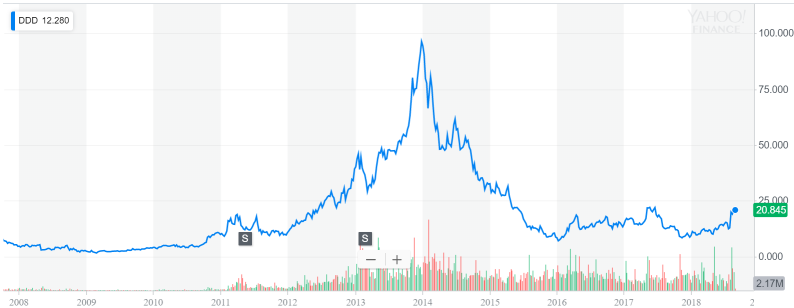Headlines skew reality because the media’s goal is to generate attention, not get the specifics of stories correct. This isn’t to say all or even most journalism is bad; it’s simply that journalists don’t think like investors and headlines aren’t always accurate. It’s easy to misinterpret trends if you read poor articles and then follow the price action. It might work initially, but you’ll be crushed in the end. There is always a new trend for the media and the market to hype, but most don’t live up to reality. A recent hyped technology that had a smaller impact than expected was 3-D printing (it’s too early to judge cryptocurrency).
Reading mainstream stories and watching the 3-D printing stocks soar made some people think that by now everything would already be 3-D printed just like magic. Technology can be like magic, but in this example the 3-D printing stocks were filled with hot air. The chart below shows the rise and fall of 3D Systems.

Source: Yahoo Finance
Many investors and journalists didn’t understand the technology. You can’t just believe the firms delivering hype without being skeptical and asking detailed questions. There’s more to the story than the surface level answers by marketing masters.
Death Of Retail Didn’t Happen
The hype machine we will discuss in this article is the opposite of 3-D printing because instead of euphoria, fear was exhibited. The death of retail was overexaggerated. We’ve seen bankruptcies such as Toys R Us occur and we’ve seen online sales grow to 9.6% of total sales, but the idea that physical stores would somehow stop existing was a farce. The chart below shows the historical Google searches for the term “retail apocalypse.” An apocalypse is a great story for the media because it instills fear for people who love to shop and for workers in the industry. (Must be great for ad clicks…)













Leave A Comment